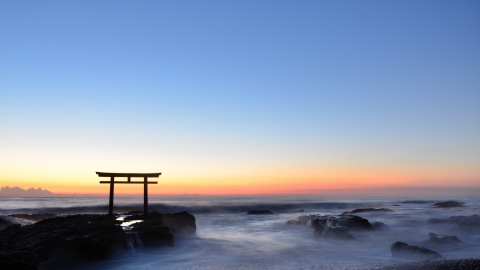Diverse to the point of… dizziness
Before leaving, my image of Morocco was a country of hot sun – of course it was hot, being in North Africa and possessing part of the world’s largest hot desert. It was only after I had traveled all the must-see destinations in Morocco that I realized that 80% of my initial image was… wrong.
After a long flight from Hanoi, transiting in Istanbul and then flying to the destination of Mohammed-V International Airport in the legendary city of Casablanca, I still had to travel more than 200 km to Marrakesh to reach the hotel I had booked in advance. The journey lasted more than a day but was not as tiring as I had worried, perhaps partly thanks to the perfect flight service of Turkish Airlines, partly thanks to the pleasant weather in Morocco and partly thanks to the picturesque scenery on both sides of the road.
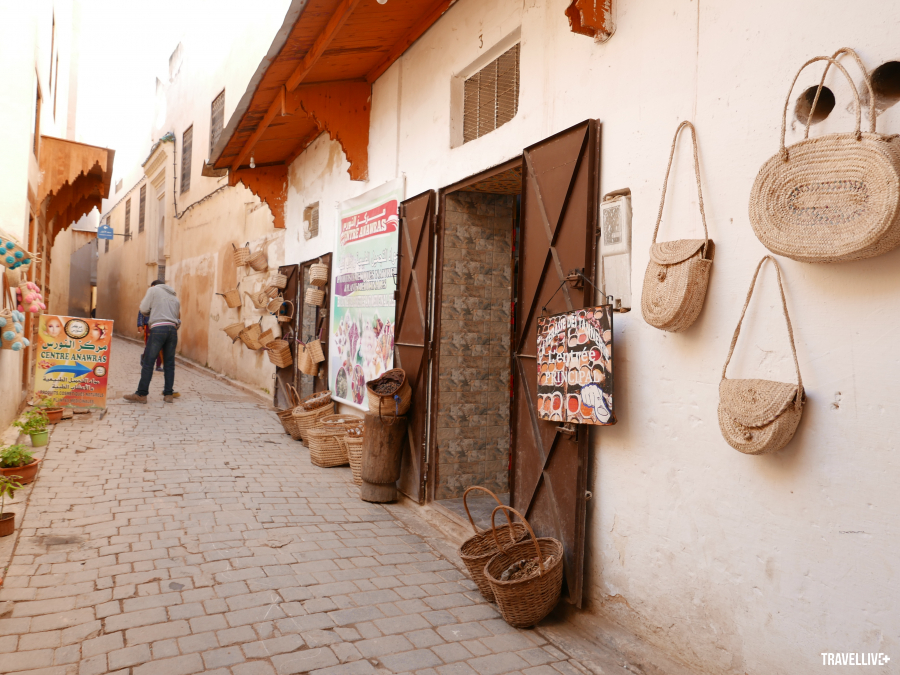
It is winter in Morocco, the sun is still bright but not hot, but cold like winter in Hanoi with daytime temperatures ranging from 10 degrees Celsius to 19 degrees Celsius. Sitting in the car on the way back to the hotel, I did not dare to sleep because I had to strain my eyes to look carefully, afraid of missing the beautiful things passing by the window: wheat fields, low hills, valleys covered with bushes, here and there are low, light red houses built in the traditional architectural style of the Arabs... Everything is so attractive to the eyes, a bit wild, evoking a feeling of excitement for those who love natural beauty and peace and simplicity like me.
But the excitement is just the beginning. Who would have thought that Morocco is blessed with so many wonders by Mother Nature? If you are familiar with the information that Morocco owns a vast coastal plain, then have you ever dreamed of seeing snow fall in Africa? If you know that Morocco is famous for the Sahara desert, do you believe that in the middle of winter here you can touch the European autumn?
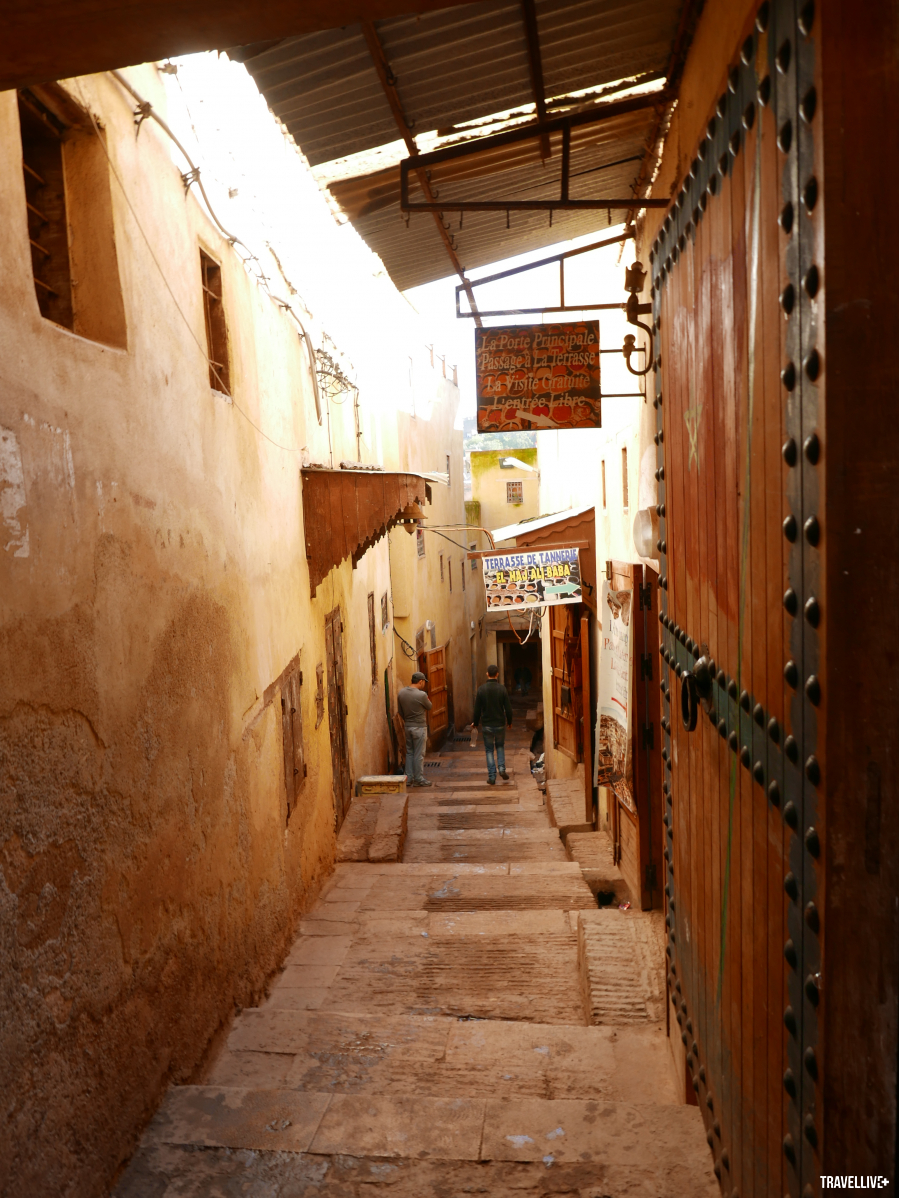
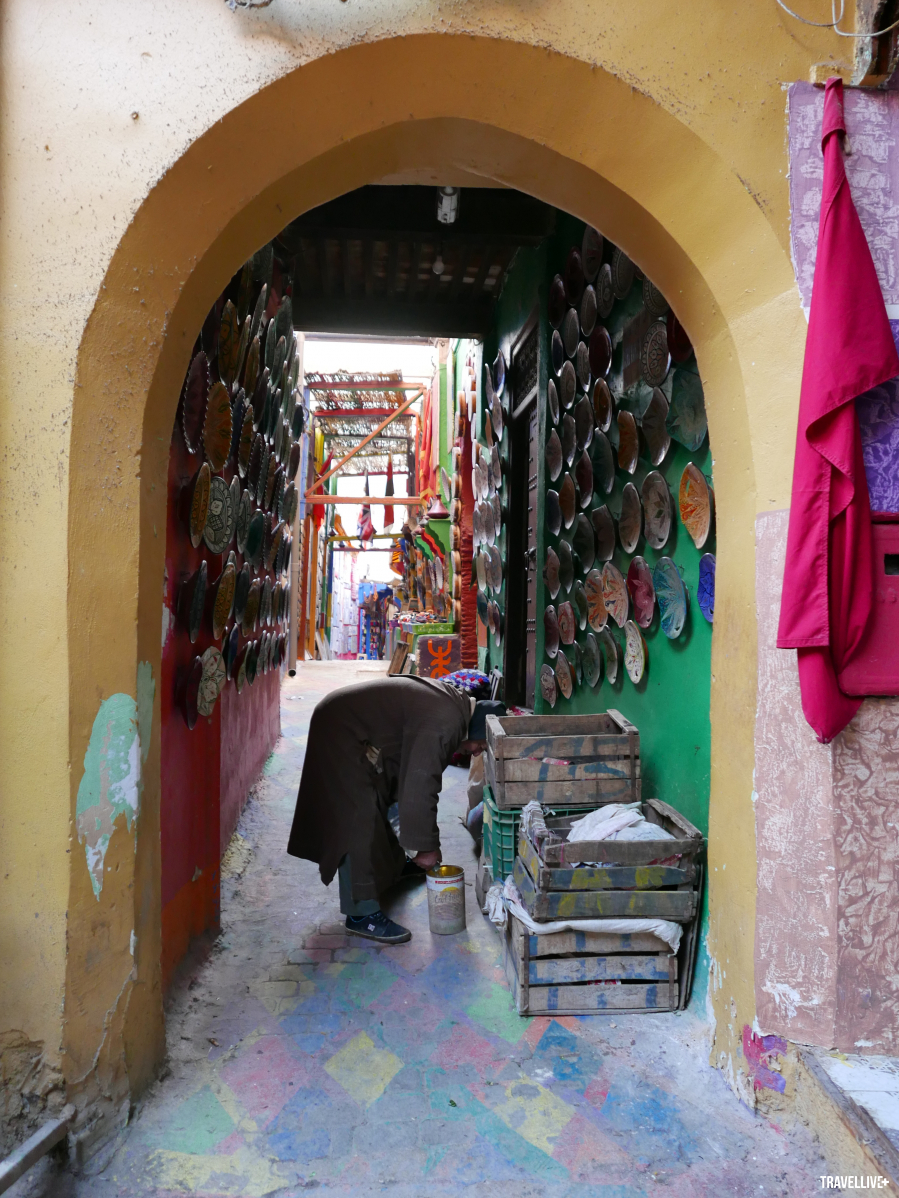
On this trip, I did not have the opportunity to explore the famous fishing ports as well as the coastal life so I have nothing to brag about. About Sahara, I will tell you later because it cannot be mentioned in a few short sentences.
Here, I want to talk about Atlas, the majestic mountain range that stretches 2,500 km from southwest to northeast. According to Greek mythology, this mountain range was born from the hands and shoulders of the giant god Atlas, and the trees and forests are his beard and hair. Atlas is divided into three impressive parts: High Atlas with towering mountain ranges and brilliant rose valleys, Middle Atlas with the city of Fes and Anti Atlas with many volcanic plateaus.

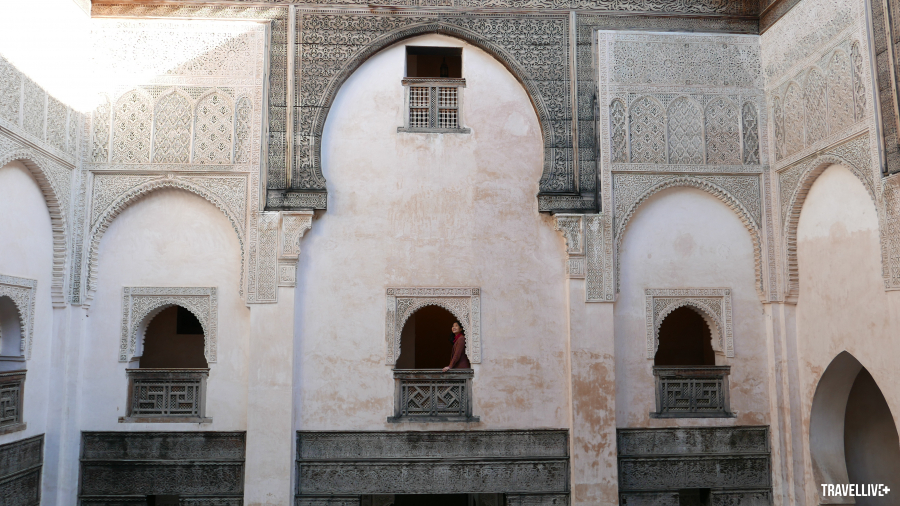

The road from Marrakesh to Ouarzazate is the road through the High Atlas region and also passes through the valleys where Berbers live in Kasbahs made of dense, red soil. Along this road, I had the chance to admire the snow-capped Jebel Toubkal, 4,167 m high - considered the roof of North Africa. The most beautiful and majestic canyon in the world, Todra, is also located in this area, near the town of Tinerhir. The canyon gradually narrows to a width of only about 10 m with cliffs on both sides up to 160 m high, creating a magnificent scene that captivates all visitors. That is why Todra is ranked as a natural wonder of the world.
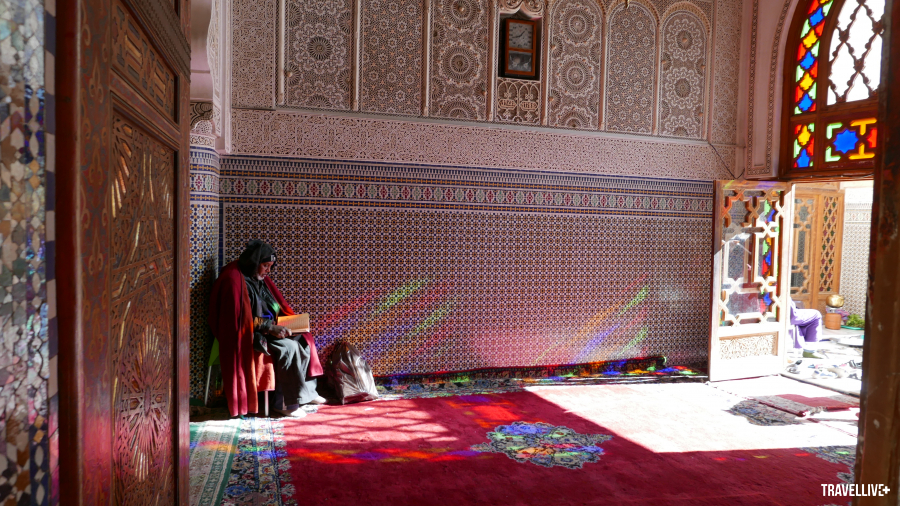
Located in the Middle Atlas region, at an altitude of about 1,664 m above sea level, Ifrane, a small town known as the Switzerland of Morocco, is also a place that gives me the feeling of gently touching the European autumn. Built by the French in the 1930s, Ifrane is cool during the summer and the temperature drops below freezing in the winter. But when I arrived here, it was early winter, so Ifrane was covered in yellow leaves. With red-roofed houses with gardens full of flowers, parks dotted with lakes, green cedar forests..., this town is different from a European town. I believe that if you experience it, you will be as moved as I was.
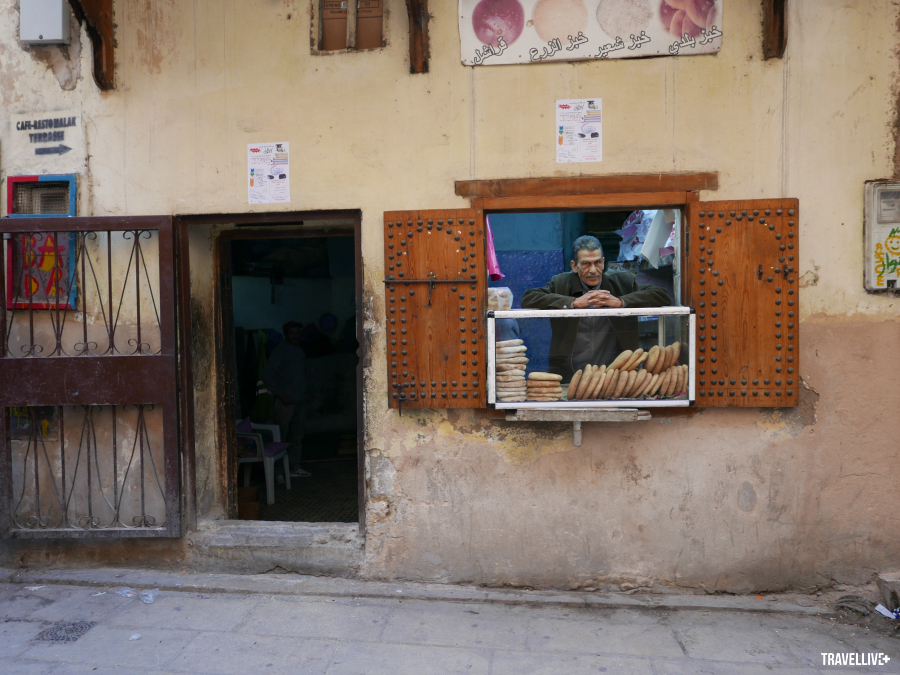
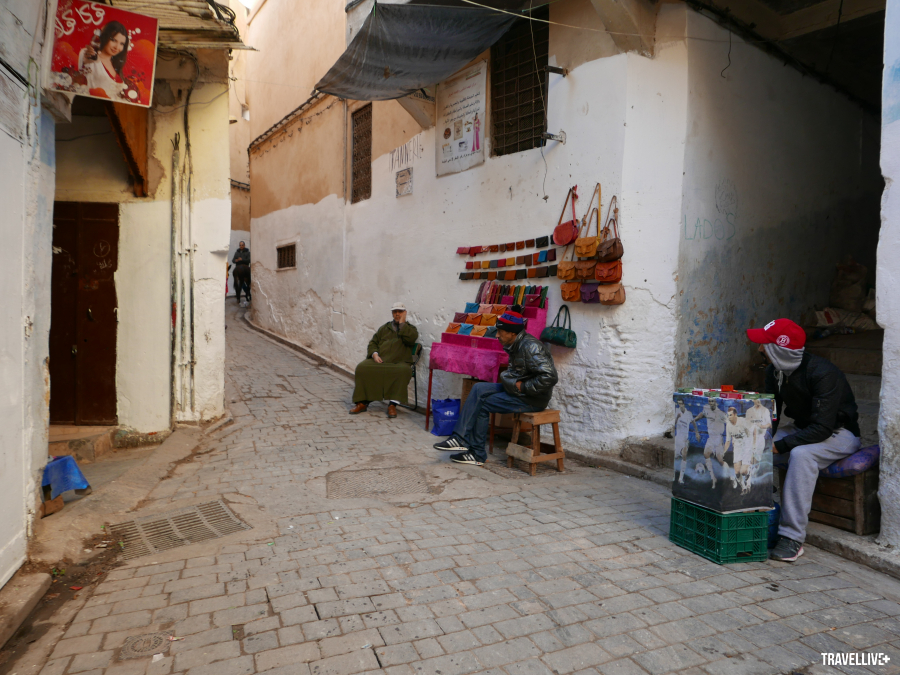
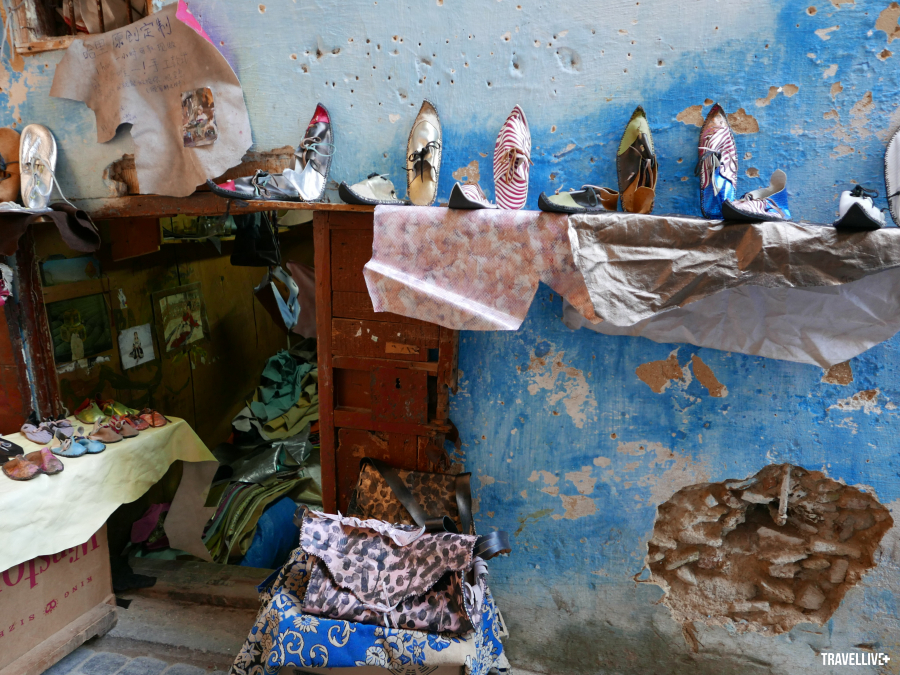

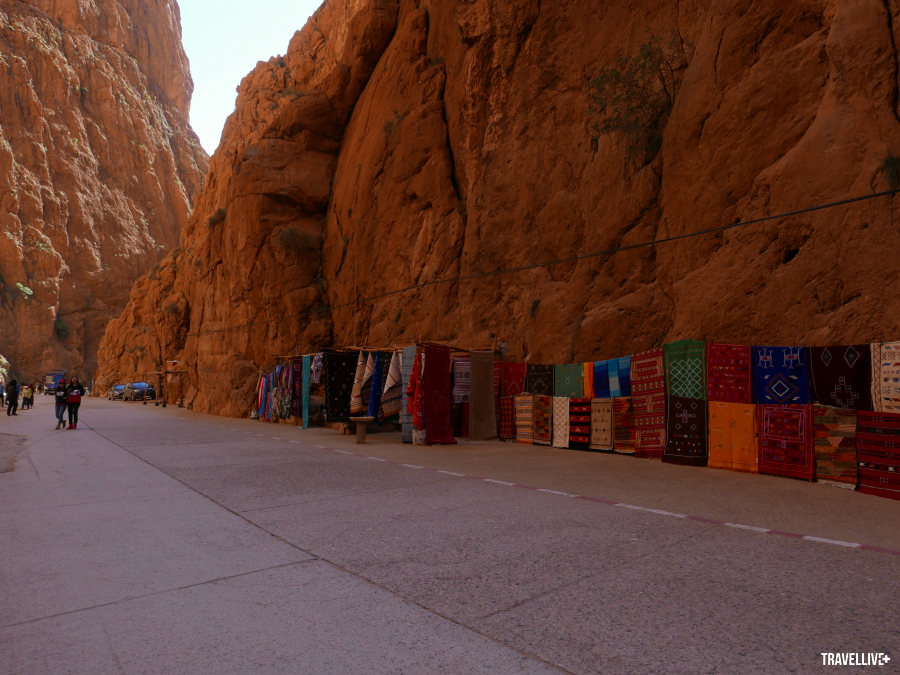
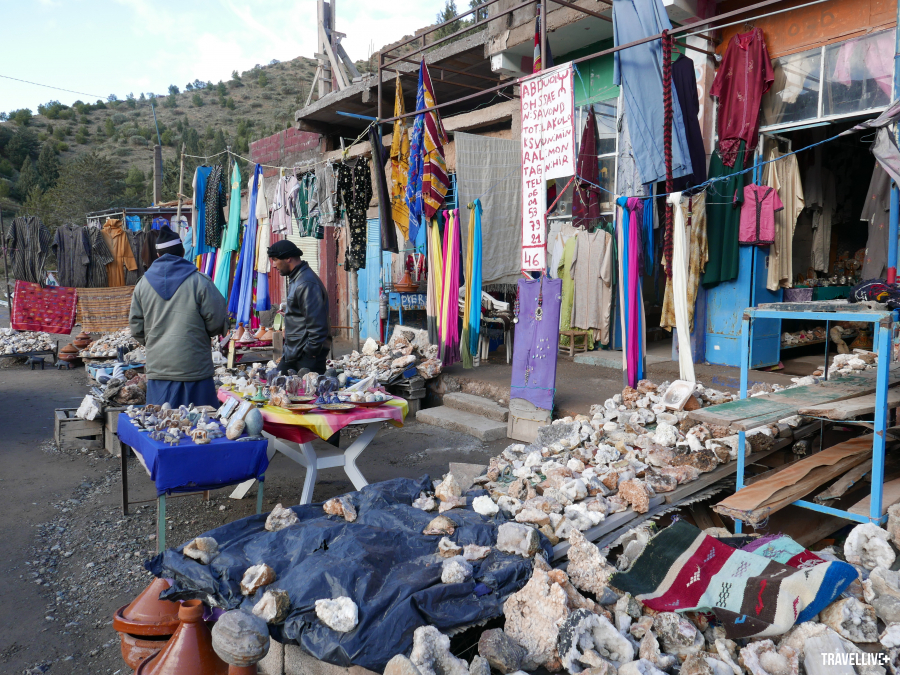
I lost myself in the medina
If you live in a modern city full of bars, fancy restaurants, full of technological amenities, cars and motorbikes, you will be startled to think that you have accidentally stepped into another world when you set foot in the medina in Morocco. Because here, you will not find any trace of modern life. Yet the medina exists in all cities of the kingdom of Morocco and is the pride of the people here.
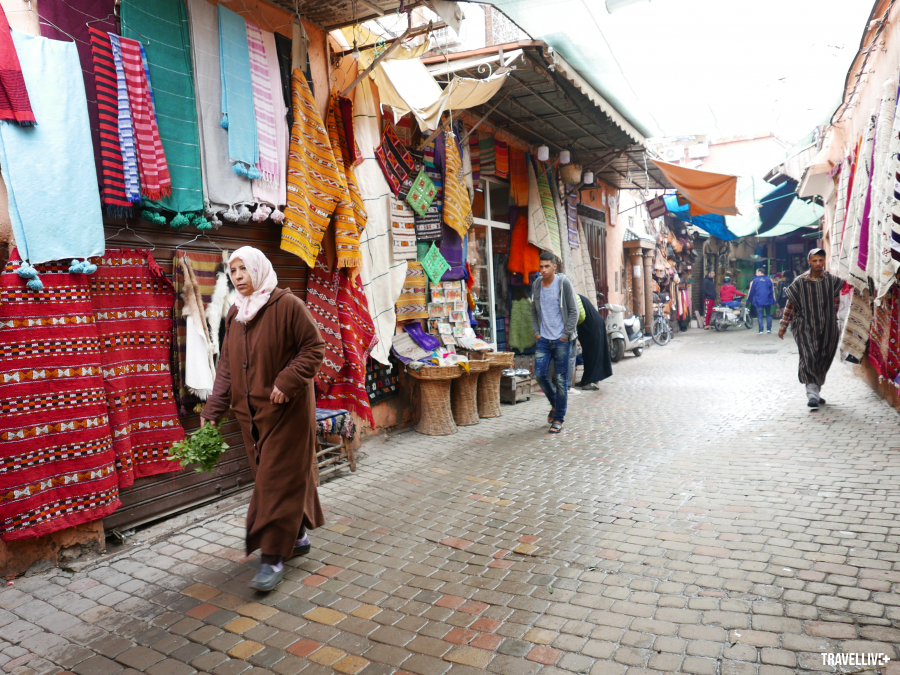
Medina is the general name for the old quarters surrounded by thick and towering walls. The common point of the medinas is that the space inside the walls is filled with markets, narrow interwoven streets, winding alleys, dead ends, mosques, schools... According to my research, the original purpose of the medina when using this architecture was to prevent invading armies. Gradually, over time, the medina became a living space, a cultural space that was extremely bustling, filled with the breath of folklore and also very unique of Morocco. What is worth noting is that each medina in each locality has formed its own identity, different and full of attraction.
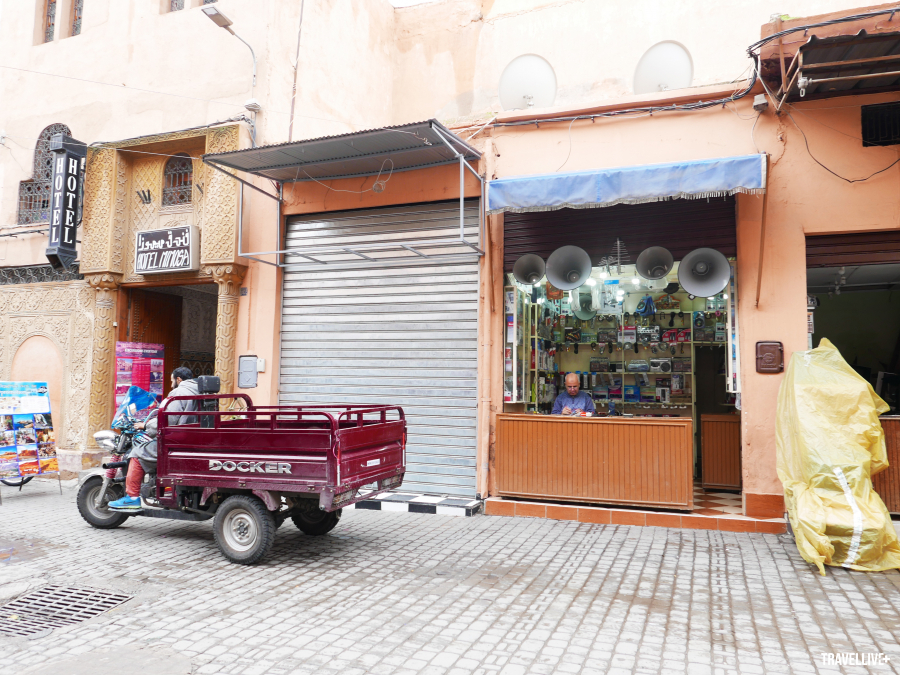

Following the example of those who came before me, I call Marrakesh the Red City because whether I turn vertically or horizontally, whether I look up or down, I only see familiar red architectures made from red soil. Once the capital of Morocco and holding an important position on the Silk Road, the history of formation and development of Marrakesh has gone through many periods of prosperity and decline, but its unique cultural features are still preserved intact. The medina wall in Marrakesh is up to 9 km long and has 9 huge gates leading to the large square Jemaa el Fnaa in the center - where many shopping and entertainment activities take place. Walking here, I witnessed a thousand and one interesting things: people wearing traditional djellaba (headdress) walking on the winding alleys; colorful carpets hanging along the walls; stalls selling souvenirs, leather goods, and jewelry everywhere; Eagle trainers inviting tourists to take photos with the tamed “king of the sky”; beautifully carved gates; fruit juice and dried fruit carts with handsome men standing by to invite customers with melodious voices; many small mint tea and coffee shops; horse-drawn carriages crisscrossing the square and the paths… And believe it or not, I also saw snake charmers, storytellers that I thought only existed in legends. All the sounds in that space combined into a unique harmony found only in Arab markets, leaving me both bewildered and strongly attracted.
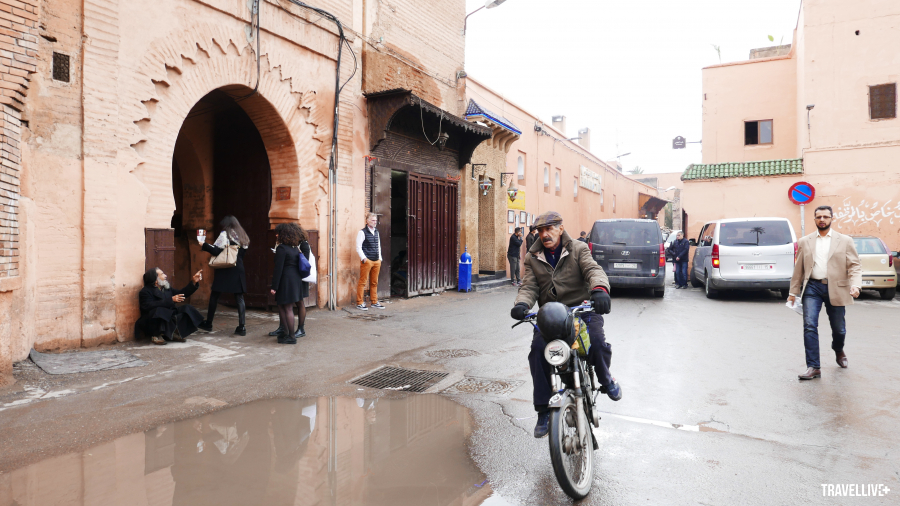
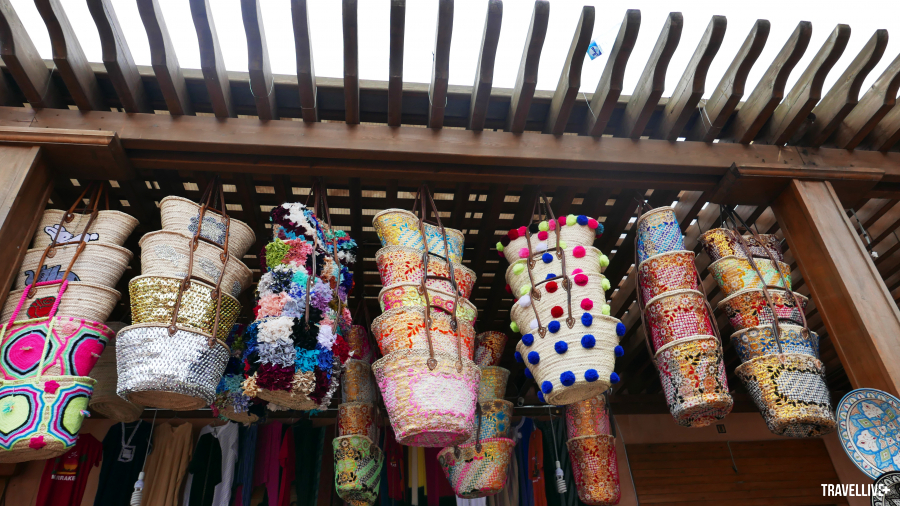
Bigger and more famous than Marrakesh, but in my opinion, the old town of Fes – Fes el Bali – is a bit quieter. There is less entertainment here but it shows more clearly the breath of ancient life and culture. If someone said the medina in Marrakesh is a maze, Fes el Bali is even more maze-like with about 9,000 small streets running crisscrossing. So it is understandable to get lost here. The local guide said that if you get lost, follow the direction of the sun and you will find your way out of the medina.
I arrived in Fes el Bali quite early, so the first shops to open were bakeries - the sacred food of the Moroccans. The sundial, which is as old as the old town (one of the few oldest clocks in the world still in existence), had not yet received a ray of sunlight. Most of the doors on both sides of the street were still tightly closed with surprisingly large locks and bolts. Many of the thousand-year-old buildings had become old, dark and had to be supported by wooden poles. The streets were deserted, mostly people taking their children to school, a few people delivering food to the shops. At the public water taps scattered throughout the medina, a few people were waiting to fill their water...

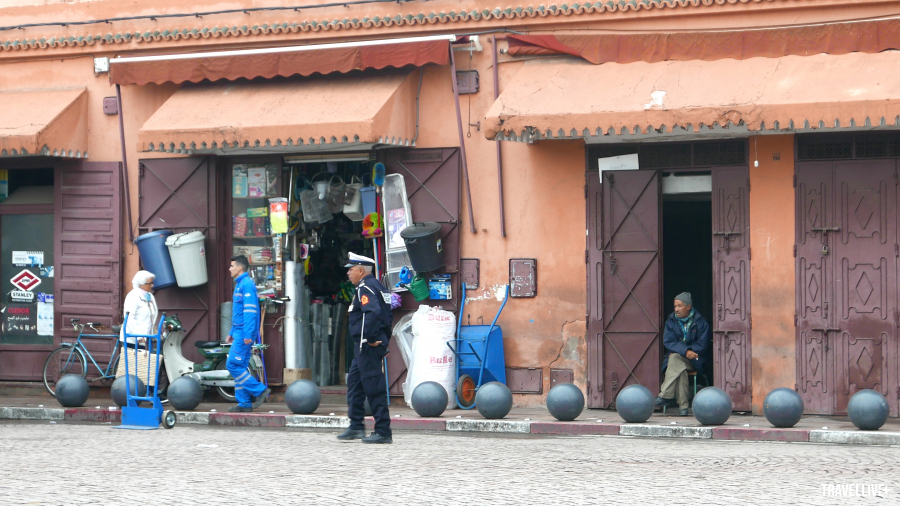
But as I walked deeper into the heart of Fes el Bali, the rhythm of a new day gradually became more vibrant without me noticing. Only when I heard a shout asking for a donkey to make way for a donkey carrying newly tanned leathers did I realize how crowded the surroundings had become. Don’t be surprised to hear me mention donkeys because donkeys are a very special feature in Fes el Bali. Instead of motor vehicles, donkeys and mules are the common means of transport, in addition to horse carts. Not only carrying goods, donkeys also serve as garbage collectors.
Another highlight of Fes el Bali is the tannery – the world’s oldest tanneries still operating in the traditional way. My guide led me through the narrow streets and suddenly entered a leather goods section at the end of a dead-end with all kinds of colorful products. Here, I was led to the “magical” window on the 4th floor, which looked straight down on the working tannery and was the place where photographers took pictures, creating the famous postcards that symbolize Morocco.
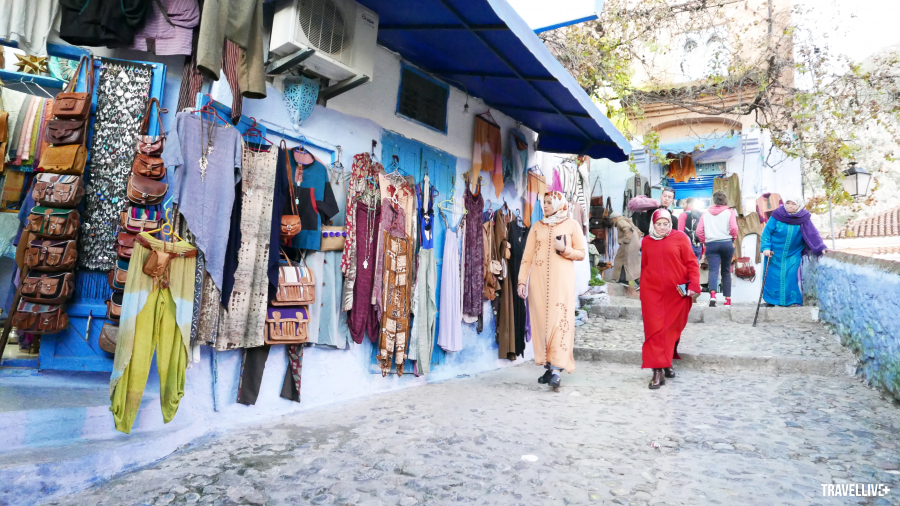
Situated on a small hill, the medina of Chefchaoen is easily distinguishable from the above mentioned medinas with its modern pace of life and the blue sky that fills the city. The architectural works here have a similar style to the Mediterranean region. If I didn't look at the typical Moroccan products sold everywhere in the medina such as carpets, dried dates, colorful jewelry..., I would have mistakenly thought that I was wandering in the old town of Santorini island. In particular, although there are still shops next to each other everywhere, although there are still enthusiastic invitations from the sellers, the medina in Chefchaoen still brings a sense of peace. Perhaps it is thanks to the beautiful blue color and the steep stairs that make visitors only focus on admiring, forgetting the bustling space around, forgetting who they are and where they come from.

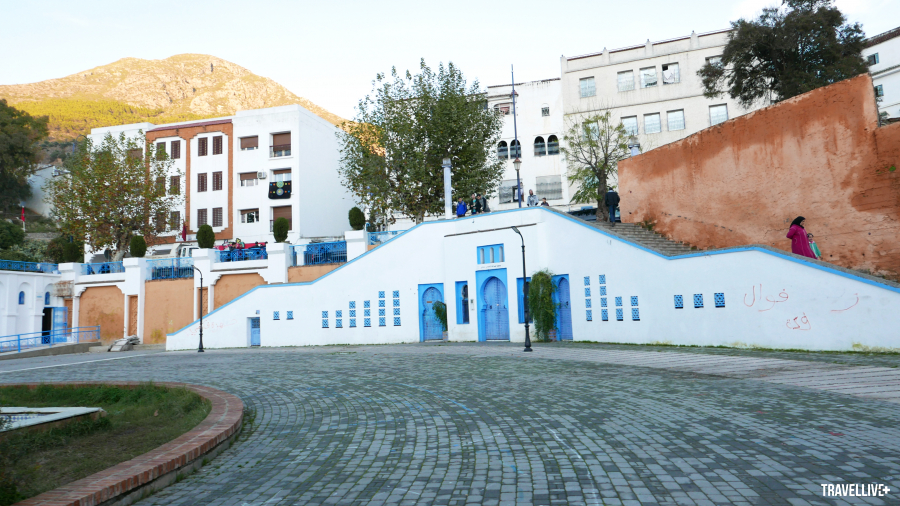
Mysterious Sahara
In my dreams, the Sahara desert was so distant and mysterious. I had frantically searched and read every information about the Sahara to make this fantasy dream come true: the harsh sun on the endless sand dunes, the cold that penetrated to the bone marrow when the night fell, the scarcity of water, nomadic shepherds, desert bandits or ferocious wolves on the prowl... But this encounter with the Sahara was completely different from what I had imagined.
From Erfoud, a small oasis in the Sahara desert - known as the gate of the Sahara, I started my journey to experience the world's largest hot desert by jeep. Only 40 minutes on the car, but this stretch of road was truly exciting because of the vast desert edge scenery rushing past, because of the sun gradually turning golden like honey, because of the dizzying speed and sudden turns of the steering wheel of the generous driver that made me feel like I was joining a race in the desert, because of the dust swirling around the wheels and the vibrant music chosen by the driver as a spice to make the journey more perfect.
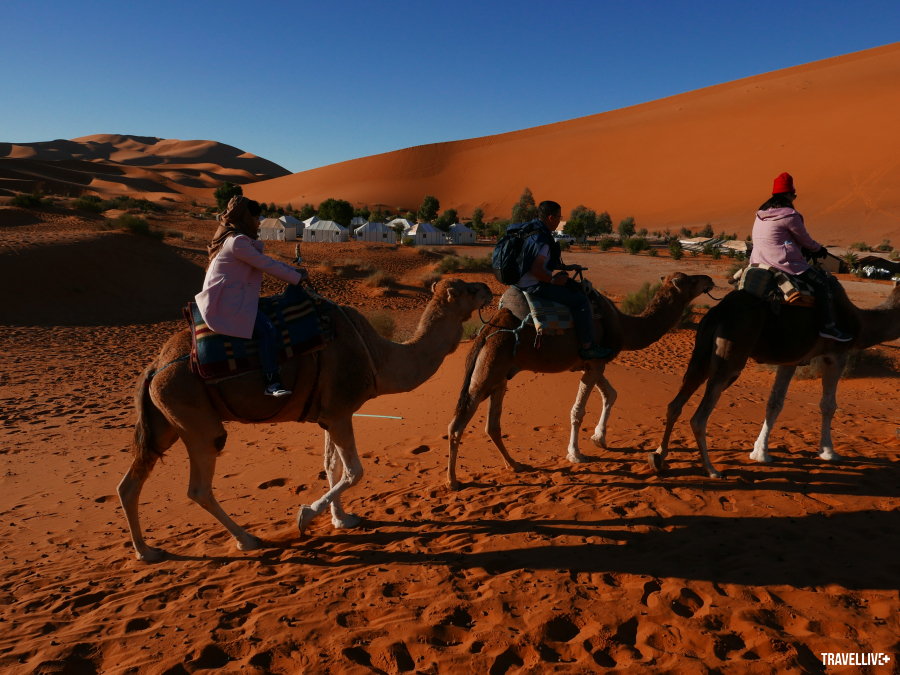
From the jeep, I switched to a camel ride when I started to see the sand dunes stretching to the horizon. The Sahara was peaceful and beautiful, without the wind blowing sand in my face, and even less so without sandstorms. The camels were gentle and humorous with many strange behaviors that made everyone laugh. The sky gradually darkened and the vast space of the desert gradually became silent, leading me to endless and beautiful thoughts.
Although I knew in advance that the place to stay for the night was Auberge du sud Deluxe Camp, one of the most luxurious camps in Merzouga, when I received the tent, I was still surprised by the facilities and luxury here. The spacious white tent was decorated in Arabic style, covered with hand-woven carpets, with soft beds, warm mattresses and many luxurious and comfortable furniture. Ignoring the worry of lack of running water, I also had a hot bath to relieve fatigue after a long day on the road, and enjoyed a buffet dinner with delicious traditional Moroccan dishes.


But all of that cannot compare to the magical experience when the sun spreads its first rays of sunlight on the desert sand. Following the appearance of the sunlight is the magical change of color of the space, from pale darkness suddenly turning pink, deep red, orange yellow and then pale yellow until the whole sky is bright. In the distance, right below the feet is a white tent lying silently. The sand dunes also seem to change with the movement of light, creating captivating lines that are breathtaking. I can't believe that Morocco has taken me from one miracle to another, letting me witness that surreal beauty with my own eyes!
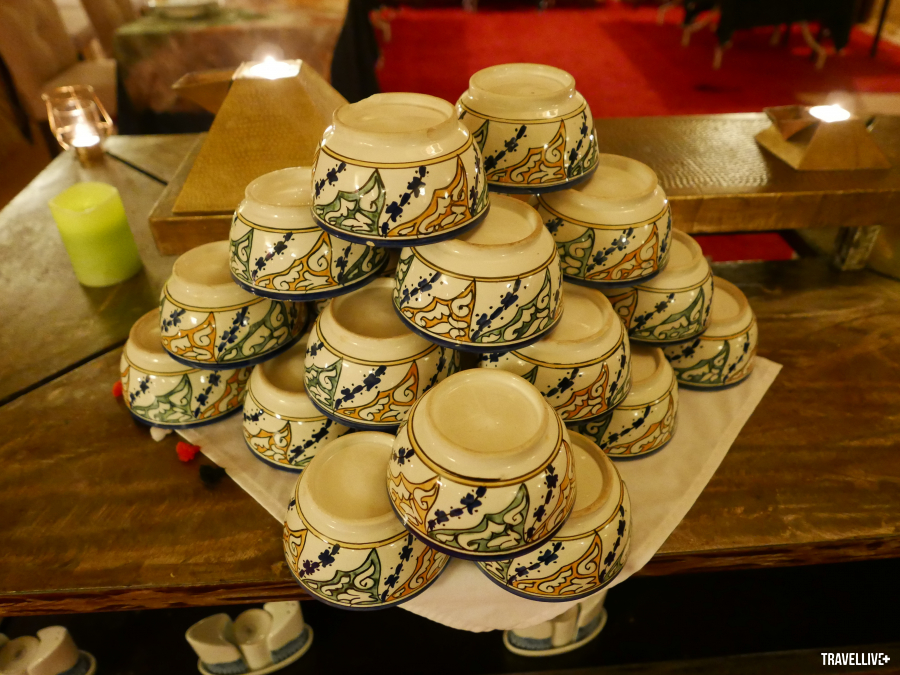
More information:
Visa:Applying for a Moroccan visa is quite easy, if you do not want to hire a service, you can apply yourself. The visa application time is 15 days.
Flight itinerary:There are many airlines that offer flights from Vietnam to Morocco, but for me, Turkish Airlines is a good choice. This is an airline with a wide flight network to 120 countries and more than 300 destinations worldwide, and has won the title of Best Airline in Europe for 6 consecutive years.
Places to visit:Casablanca, Marrakesh, Fes, Sahara desert, Chefchaoen… are the places you must visit. My plan for this trip to Morocco was provided by Cox and Kings Vietnam.
Time:Morocco is at its best in spring, from mid-March to May. You can also visit Morocco in winter (from November to February), when the temperature is quite pleasant and you can see snow falling in the High Atlas.
Accommodation:Morocco offers a wide range of accommodation, from guesthouses and small hotels to luxury hotels and resorts.
Cuisine:Considered the best in the East and famous in the world, Moroccan cuisine is a delicate combination of vegetables, fruits, rare and aromatic spices, fish and meat. Skewers, quail cakes, Méchoui lamb, Pastilla, B'ssara soup, Tajine, mint tea, coffee... are dishes not to be missed.
Transportation:taxi, bus, subway, train.
Skin:Morocco is a Muslim country so remember to wear modest clothes. If you go to Morocco in winter, you should bring warm clothes because the winter temperature ranges from 10 to 19 degrees Celsius. In summer, you should choose loose and airy clothes to stay cool and protect you from the sun.
Other notes:
- Do not throw away bread because Moroccans eat a lot of bread and respect it very much.
- You also cannot pour hot water into the sink because Moroccans believe that all places connected to water are regularly visited by the Gods.
- Bargaining when shopping is a common Arab culture. You should pay at least 1/3 of the price.
- In luxury restaurants, tipping is necessary and usually from 10 - 15%.
Ask permission before taking photos of people. Some people will happily accept money and let you take their photo.





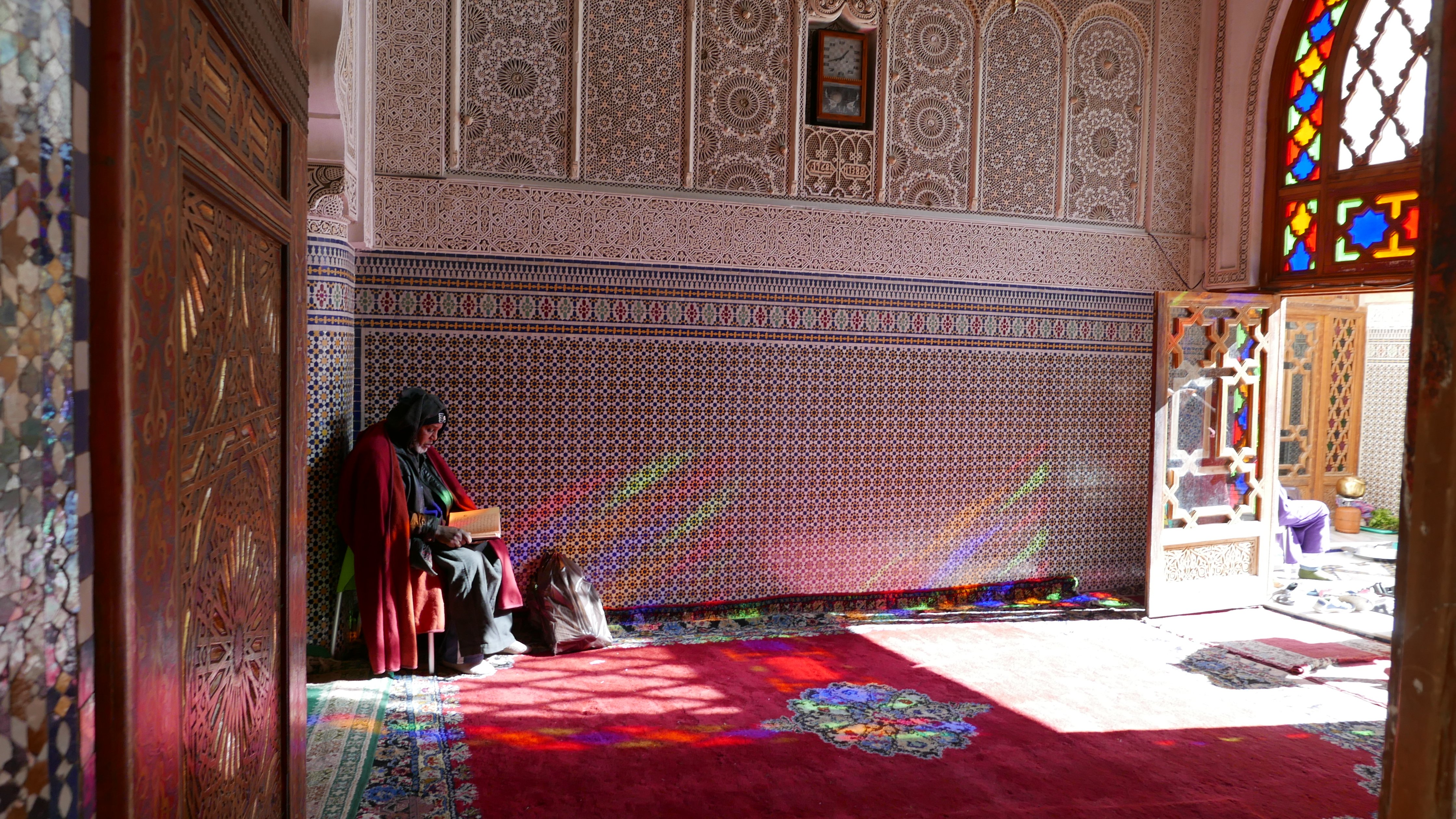










.jpg.jpg)








